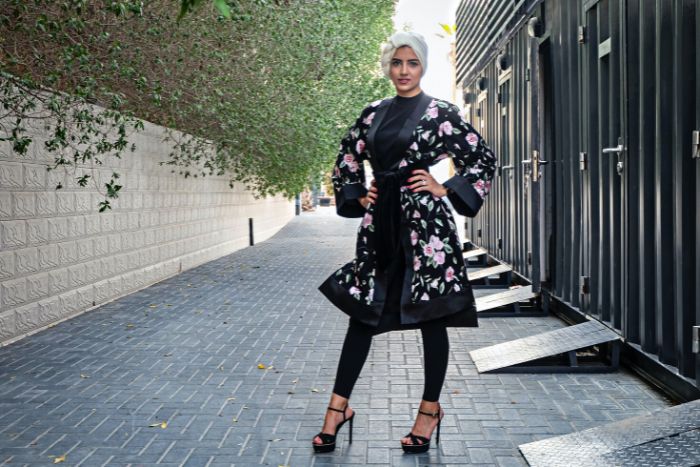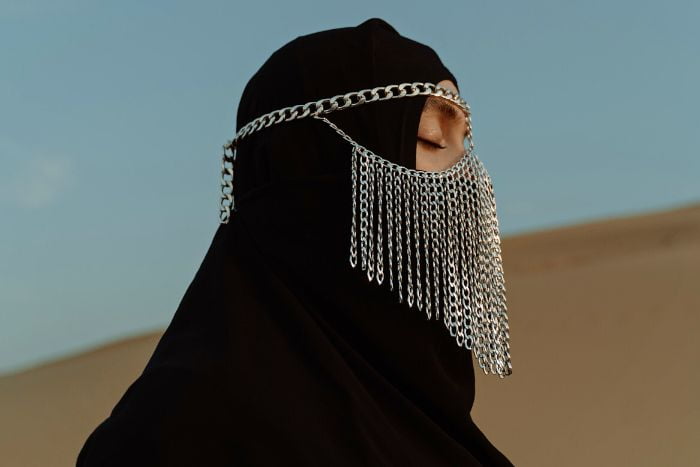Through a deep dive into history and culture, we look at how tradition and modernity coalesced to transform UAE fashion in 2023
Life in the UAE has always been a window into the multicultural nature of fashion. A melting pot of different races and ethnicities, the country provides much room to learn, imbibe, and evolve in terms of style alone.
However, local fashion remains an underrated treasure chest the world is oblivious to, with the tide slowly but surely turning. Rooted in tradition and culture, Emirati fashion has a long and storied history.
Given the subtleties of change, many are inclined to believe that the traditional dress of Emiratis, i.e., the kandura for men and the abaya for women, are largely unchanged. A closer look reveals several fashion trends, with functionality at the heart of it all.
For instance, the early days of Bedouin life in the Arabian Peninsula saw clothing designed for comfort in high temperatures. Veils and long-sleeve robes, especially in the summer, doubled as both airy and protection from the sun. For men, kanduras were often white simply because it was the coolest colour to wear, with some wearing jackets and vests over it during winter to keep warm.
You might also like: Why oversized jackets are fashionable again
Of course, the simplicity of the pre-oil fashion era transformed once urbanisation, rapid social and economic change, and access to international markets hit.
“Before, in the old days, our outfits were very simple,” says Maitha Belhabb, Founder and Owner of 4Collections Fashion. “My great-grandmother would use specific, limited materials because back then, they didn’t have a lot of elements (materials etc) brought from outside.”
Qasr Al Hosn’s 2021 exhibition Fashion Through The Years provided a fascinating fashion retrospective, depicting fashion trends from the 1960s to the 1980s. From different types of traditional embroidery (Talli, Badlah and Khoos) to intricate headpieces and other jewellery; sewing and Talli instruments, there is much evidence to document the change that came in with open trade routes.
With the onslaught of material came elaborate stitching patterns, fabric dyes and much more. Given that traditional Emirati garments were often hand-sewn and embroidered, they were also symbolic of your societal standing.

“In the ‘90s things changed dramatically. It was very much about strong embroidery and bead and stone work. The more extravagant your kandura the better, as it somewhat reflected your social status. The quality of the work, the crystals used, it was all made with love and conveyed times were changing,” explains Maitha.
Over the years, younger generations have travelled for leisure and education across the globe, with local fashion benefiting from these influences. The same has translated into bigger, bolder patterns, and a contemporaryesque transformation with time.
Take the abaya, a garment synonymous with women’s fashion here in the UAE and the wider Arab Gulf. The most visible change took place around the 1980s with the move from the head aba to the shoulder aba with sleeves. Again, functionality appears to be the main trigger, with women adapting their clothing to a newer lifestyle, one where they drove, entered the workforce, and more.
In the 30-odd years since, the abaya has undergone several silent revolutions, right from the inclusion of colours to experiments with texture. There is also diversity in places where fabrics are imported from, Maitha points out.
“Cotton and silks have always been the dominant fabrics used, and they used to be primarily imported from Iran and India. Today, they are imported from across the world. I purchase my fabrics from local shops, who in turn get them from Italy. Again, quality is a big factor to me and my brand above all else.”
You might also like: 2023 Forecast: Fashion and Beauty Trends
In metamorphosing from a life in the desert to being a global metropolis, much has changed and remained. While big-league brands like Dolce & Gabbana might showcase Ramadan collections, there is still debate over their horizons being limited to kaftans. That being said, the social-media age does bring the promise of the West being increasingly sensitised to authentic Emirati customs and fashion.
Despite changes, traditional clothing remains an important part of the Emirati identity. However, the rise of modern influence in fashion is not to be dismissed, with the younger generations’ experiments now yielding newer ways to express themselves and celebrate their culture, while also embracing the global fashion trends that have become so popular in recent years.
Whatever the future of fashion holds, one can safely assume a distinctly Emirati facet will be part of it.
Follow Yalla – Abu Dhabi Life for all the fashion & beauty article




